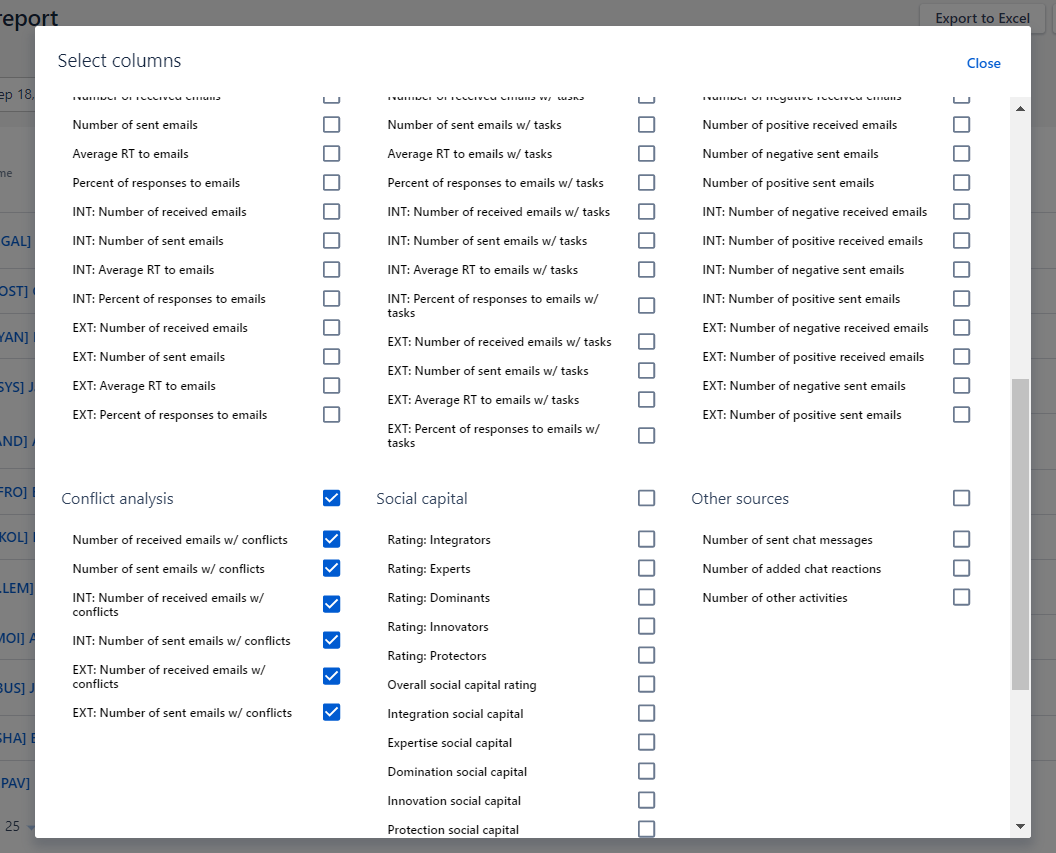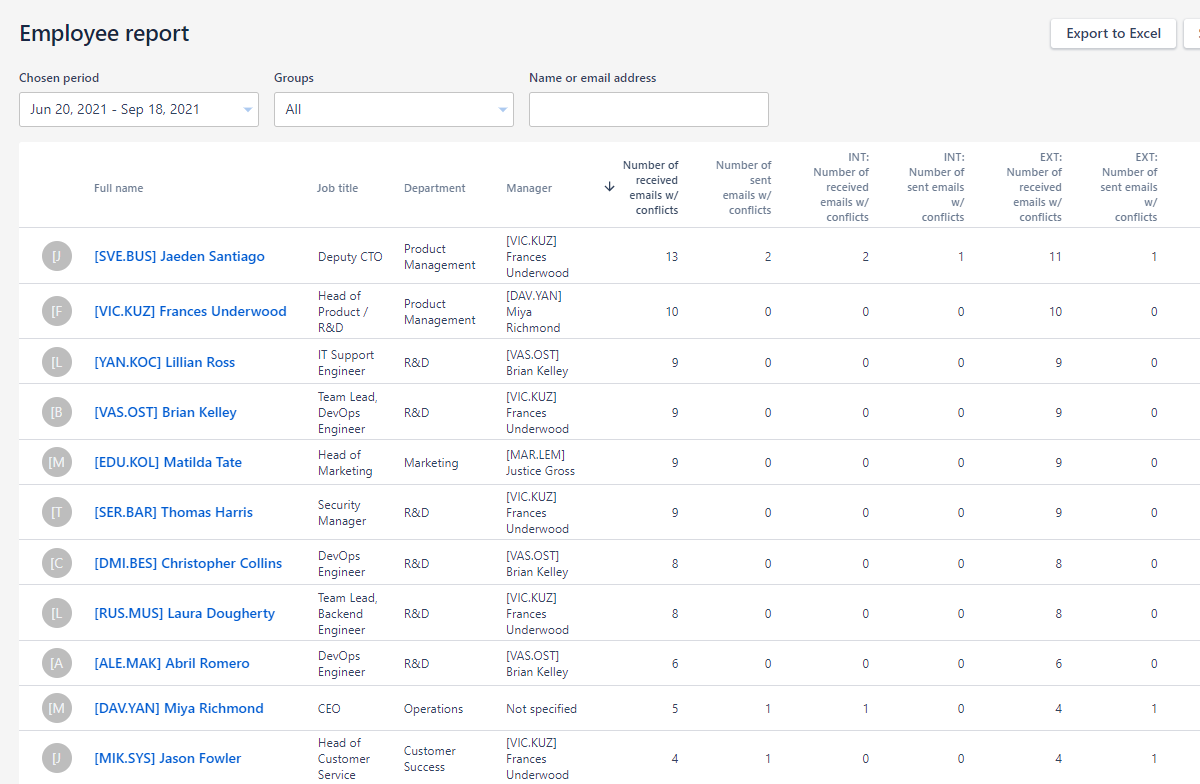Conflict analysis
The artificial intelligence of the platform uses NLP (Natural Language Processing) to recognize the presence of conflict, positive, negative or conflicts in communications between employees.
The information contained in text messages is extremely sensitive to the business of our customers. With this awareness, we deliberately designed the platform in such a way that all text analytics are implemented as a classification. The system has a task: to understand whether the text contains a set of high-level features that can give useful information about the performance of the individual employee of the company, about their contribution to a healthy atmosphere in the team, about the actual (not nominal) place of the employee in the business processes of the enterprise.
The platform is designed in such a way that text messages are not stored in the platform, so they cannot be read or stolen, they only exist in the information systems of the customer's company. It is absolutely safe to trust the platform to “read” the text.
We have developed and patented a two-step procedure for working with text. Thanks to it, we can use already trained classifiers or train new ones even without the text itself.
The negative subset reflects the complex essence of processes that are harmful from the business point of view. They are very diverse.
A conflict can be interpersonal when two people are in a state of personal antipathy. Or of a group kind, when, for example, different company departments cannot align teamwork.
In the text, a conflict can be expressed in a non-trivial way. It is important to separate it from sarcasm, jokes, etc.
How does the platform deal with such a complex topic of determining whether there is a conflict in the text?
The answer is very simple. Neural networks and their capabilities are a reflection of the data on which they were trained. The neural networks of the platform classifiers are trained on large volumes of texts, which are manually marked by specialists. We made sure that the content of such texts reflects all aspects of human communication through text messaging as fully as possible.
An example of the letter where conflict is defined:
"John, Jason doesn't hear you. His actions are aimed at FIRM elimination. I've talked with Kate several times this week. The situation is serious.
Having full access to all the data of the Company, Jason turned out to be incompetent to read, analyze and correctly submitting the financial information to UPGRADE shareholders. I was not invited to a key meeting on this issue. I was ready to attend it, all that was needed - just to change the time for one hour.
All that resulted in a fiasco in negotiations and emotional attempts to place the blame on the management.
I hope that now the reasons why I request the initial information received by Jason in April are clearer. I want to examine the original data from the UPGRADE owners, not the interpretation of Jason and his colleagues.
The number of mistakes exceeds reasonable limits. Unnecessary emotionality is supported by impudent obstinacy. All that leads to a dead end. I offer to withdraw Jason's mandate to negotiate a deal with UPGRADE.
I am ready to start from tomorrow and spend 50-70o/o of my time on negotiations with UPGRADE".
Metrics of employee communication with conflict are divided into three blocks:
Metrics for all contacts, that is, any communication of an employee,
Metrics for internal contacts, that is, communication within the organization,
Metrics for external contacts, that is communication with people outside the organization.
For each block of metrics the platform calculates:
The Number of received emails with conflict
The number of incoming emails of an employee with conflict without taking into account mailings and automatic notifications.
The Share of received emails with conflict
The share of incoming emails with conflict, excluding mailings and automatic notifications.
The Number of sent emails with conflict
The number of outcoming emails of the employee with conflict, excluding emails that are marked as automatic.
The Share of sent emails with conflict
The share of outcoming emails with conflict, excluding mailings and automatic notifications.
Additionally, you can receive the following metrics using our Reports API:
The Average response time to emails with conflict
The average response time of an employee to incoming emails with conflict when taking into account only those emails that the employee responded to.
Weekly calculation: all outgoing emails of the user for the week are taken. For each of these emails, it is checked which of them were responses to the incoming previous email with conflict. For each message that is a response, the difference in HH:MM:SS is taken between the moment of sending the response and the moment of receiving the message. For a week, the median of all the values obtained is taken. Emails that are marked as automatic are excluded from the calculation.
The calculation for more than a week: the median of weekly values.
The Percent of responses to emails with conflict
The percentage of incoming emails with conflict that the employee has responded to.
Weekly calculation: all incoming emails with conflicts of the user are taken into account. For each of these emails, it is checked whether there was a response to this email. This gives a +1 response message.
Sent emails that are marked as automatic are excluded from the list of response emails.
The metric is considered as "the number of response emails" / "the total number of emails with conflict received".
The calculation for a period longer than a week: the median of weekly values.


In the Reports API, metrics can be returned: